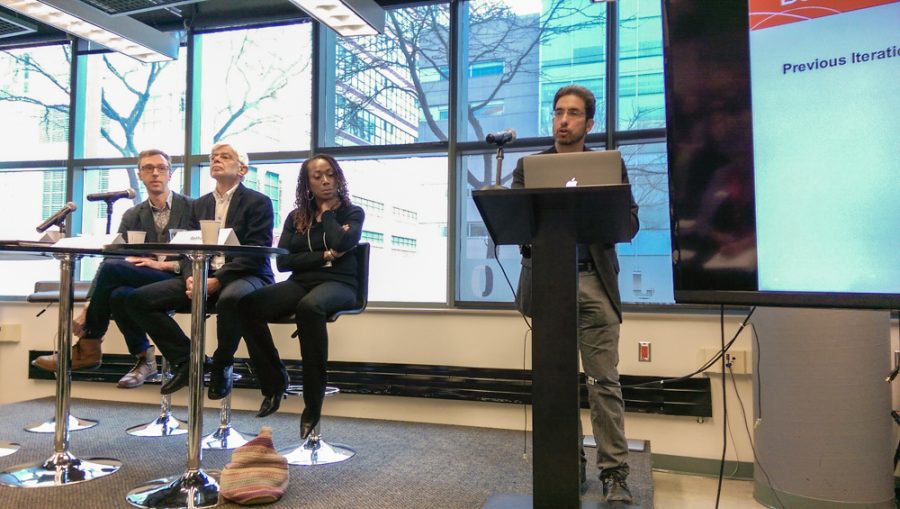By Ilina Ghosh for the Ryerson Journalism Research Centre
When Beyoncé released her latest album, Lemonade, exclusively on the music streaming service Tidal, new user sign-ups rose by 1.2 million. But since then, the service’s popularity has once again waned. The same effect can be applied to modern journalism, says Alex Watson, The Telegraph’s former head of product.
Events like elections and terrorist attacks can draw audiences to news sources, but they result in short bursts of engagement. Whereas significant, yet small, improvements in the interfaces and delivery systems of news organizations can result in long-term, generalized effects, says Watson, who recently took on a new role as the head of product at the BBC.
“[The product of news] is more than the journalism. The delivery system is doing far more than delivering content, it is shaping how people behave,” he said.
Audience behaviour was a central focus of Journalism Transformations, a recent colloquium organized by the Ryerson Journalism Research Centre. The day-long conference explored the major shifts taking place in journalism today in terms of audiences, education and technology. Researchers, academics and industry innovators from Europe, the United States and Canada gathered at the Ryerson School of Journalism in April to discuss these paradigm-shifting changes. (Click here for full coverage of the Journalism Transformations event.)
While the past decade has seen significant shifts in audience behaviour and interests, speaker Retha Hill, professor of practice at Arizona State University’s Cronkite School of Journalism, says the news industry is still not taking an audience-focused approach to journalism.
“If news or storytelling is our product and that’s what we’re supposed to be focused in on, we have to do a better job of understanding our clients,” Hill said during the colloquium’s opening session. “It seems to me to be critical that [if] we understand more of audience behaviour and analytics … we could be better at providing audiences with relevant, actionable content.”
While other industries are tapping into modern audience research tools to better sell their products Hill, who teaches media entrepreneurship and virtual-reality storytelling at Cronkite, says journalists are still slow to do so.
“We [should] use more of the tools that are currently available to us, tools that are serving our competitors well, all the other content providers that are competing for our audience’s attention. If the point is to get our audiences to consume news, isn’t it incumbent on us to pull out all of the stops to get them relevant information whenever and wherever they’re in a position to consume it?”
This resistance to giving the audience exactly what it wants is a long-held viewpoint, said panelist and media researcher Philip Napoli, a professor and associate dean at Rutgers University.
“Journalism, as a community, has tended to have an aloof detachment from its audience, this paternalistic notion that it’s our job to know what [the audience] needs and that we need to maintain some independence and autonomy from what the audience says it wants.”
Read the rest of the story on the Ryerson Journalism Research Centre where it was first published.

